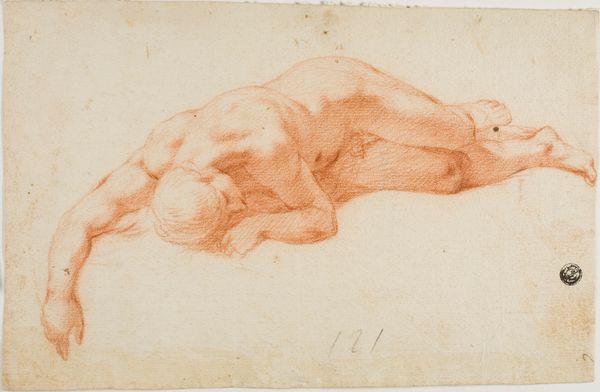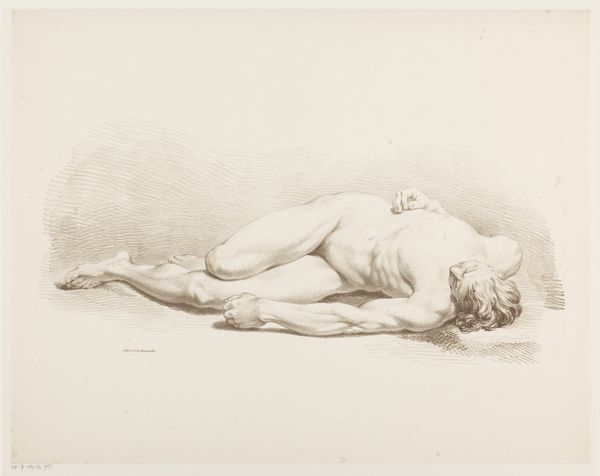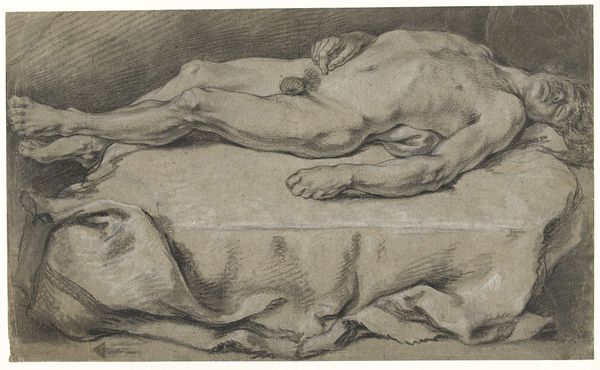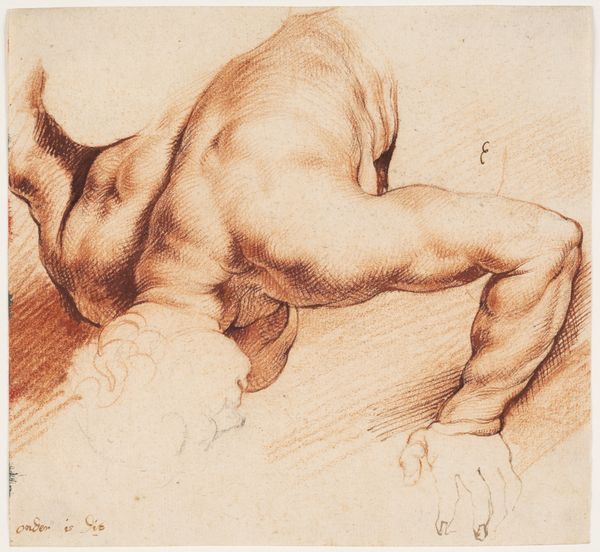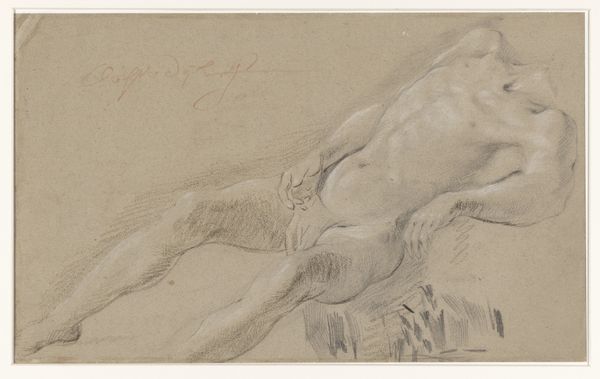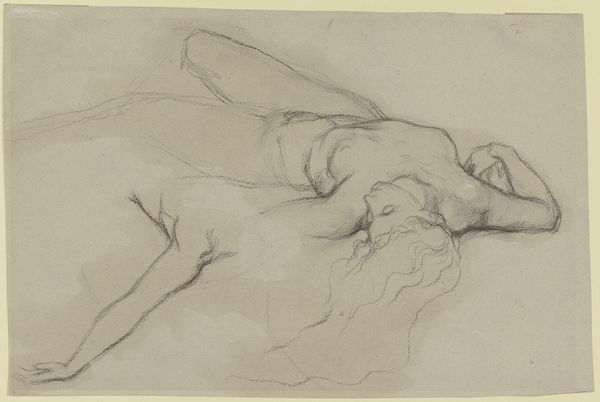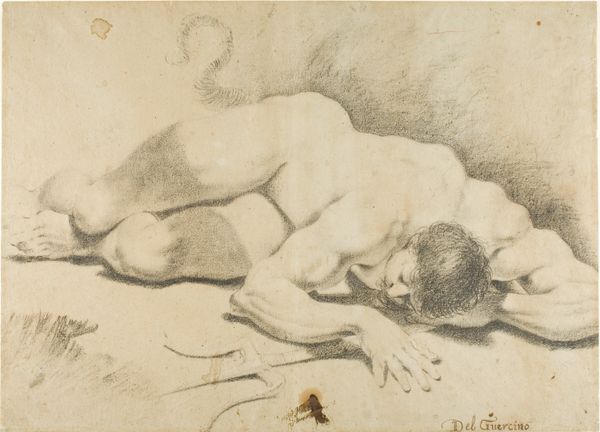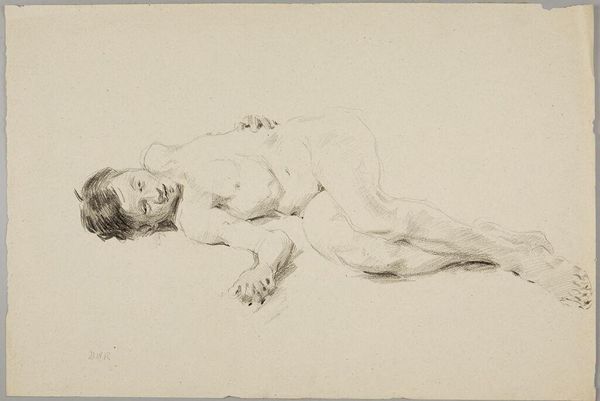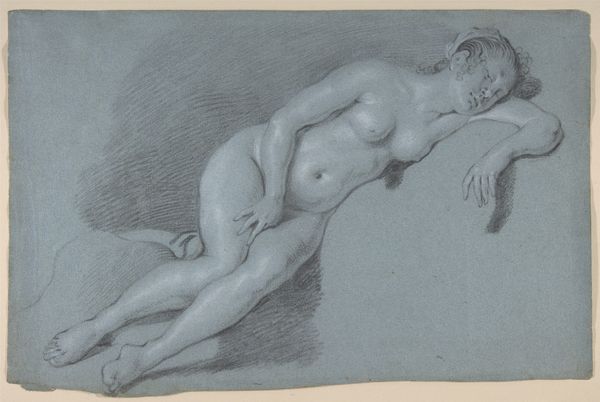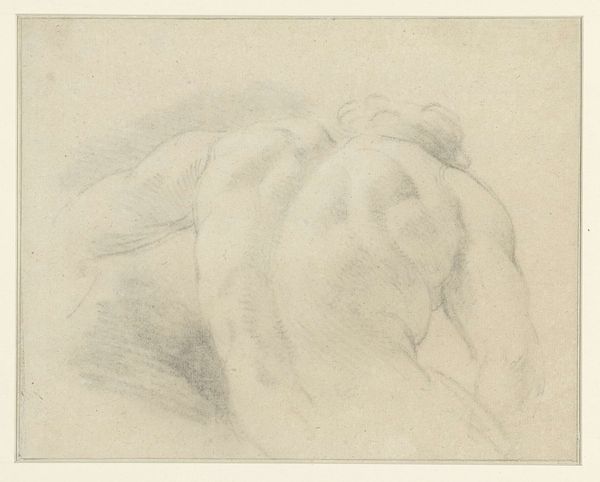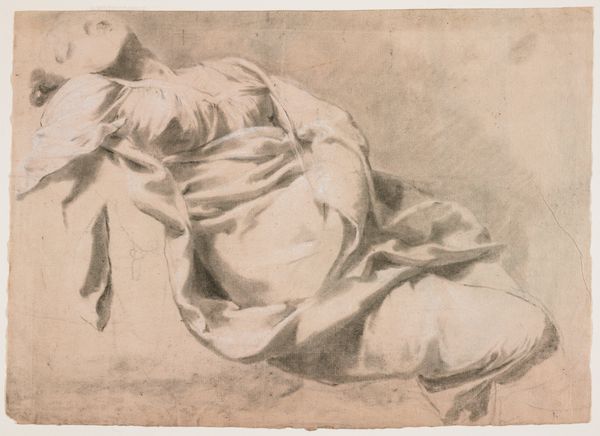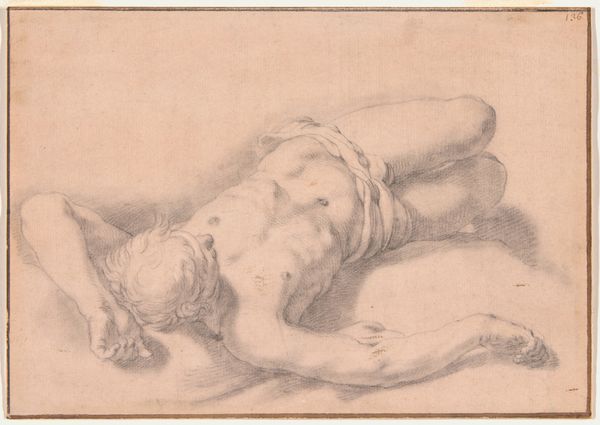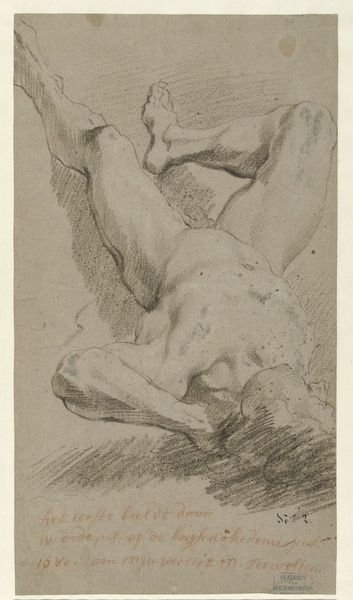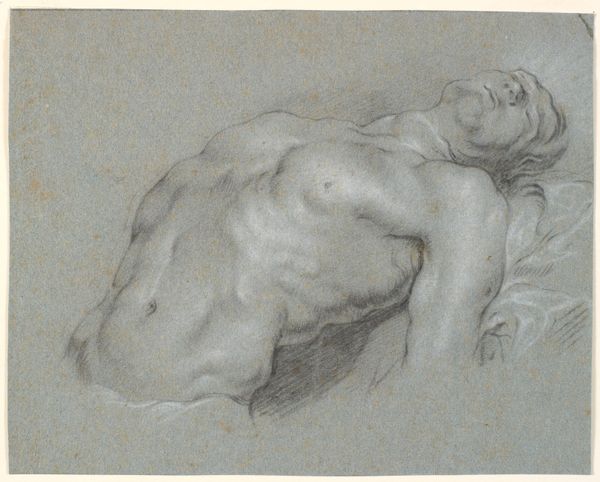
drawing, paper, pencil, graphite
#
portrait
#
pencil drawn
#
drawing
#
baroque
#
pencil sketch
#
charcoal drawing
#
figuration
#
paper
#
pencil drawing
#
pencil
#
graphite
#
pencil work
#
academic-art
#
nude
#
realism
Dimensions: 272 mm (height) x 463 mm (width) (bladmaal)
Editor: So, here we have Hendrik Krock's "Male Model Study, Lying Down, Crouched Up," a graphite and pencil drawing on paper, dating sometime between 1671 and 1738. It’s quite striking; the figure’s pose seems vulnerable and introspective. What do you see in this piece beyond just a life study? Curator: I see the body as a site of power and vulnerability. While seemingly classical, these academic studies also participated in defining and reinforcing societal norms. Consider how the male nude, historically, has been employed to convey notions of heroism and ideal beauty, often excluding other representations. Krock's piece begs the question: whose bodies are being represented, and whose are being excluded or marginalized? Editor: That’s interesting. I hadn't considered the implications of who gets depicted and how. Do you think this drawing challenges those traditional representations at all, given the subject’s somewhat… awkward pose? Curator: Perhaps subtly. The vulnerable posture certainly deviates from overtly heroic portrayals. But it's important to remember the context: these studies served as a foundation for larger, often propagandistic, works. So while the figure's pose might suggest a crack in the facade, we need to consider what purposes these studies ended up fulfilling. Is the vulnerability only skin-deep? Did this figure then morph into someone of power in the end? Editor: So, even seemingly neutral studies can contribute to larger power structures and reinforce existing social hierarchies? Curator: Precisely. By dissecting seemingly straightforward representations like this, we start to unpack the layers of meaning and influence embedded within the art. It forces us to interrogate the role art has played in perpetuating or challenging societal norms, something that requires continuous dialogue. Editor: This has totally reshaped my understanding of academic drawings! It's fascinating to see how even studies of the human form can have a deep cultural relevance and impact. Curator: Indeed! It’s not enough to just appreciate technique. Engaging with art demands a critical perspective, understanding the 'why' and 'for whom' behind artistic choices.
Comments
No comments
Be the first to comment and join the conversation on the ultimate creative platform.
